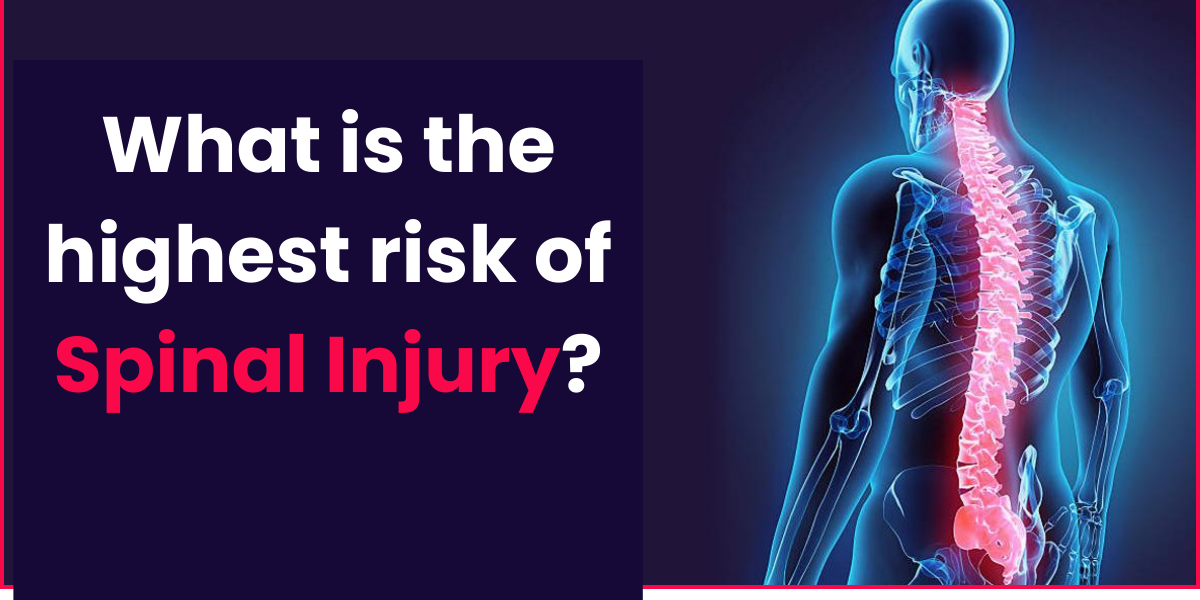What are spinal injuries?
Expert Insights on Spinal Injuries by Dr. Shrikant Dalal,
A spinal injury is damage to the spinal cord, which is a bundle of nerves that runs down the backbone. This damage can result in a loss of sensation, movement, or function below the injury site. Spinal injuries can occur due to accidents, falls,sports-related injuries, or other traumatic events, and the severity of the impact can vary, leading to different degrees of impairment.
Signs and symptoms of Spinal Cord Injuries
Loss of movement:
impaired ability to move certain body parts.
Altered Sensation:
Changes in the perception of heat, cold, and touch.
Loss of Bowel or Bladder Control:
Difficulty in controlling bowel or bladder functions.
Exaggerated Reflex Activities or Spasms:
Uncontrolled muscle contractions or heightened reflex responses.
Changes in Sexual Function:
Altered sexual function, sensitivity, and potential impact on fertility.
Pain or Intense Stinging Sensation:
Discomfort or sharp sensations due to nerve damage in the spinal cord.
Extreme Back, Neck, Head, or Back Pressure: Intense pressure or pain in these areas may indicate spinal cord issues.
Weakness and Incoordination:
Loss of strength, coordination, or control in various parts of the body.
Trouble with Balance and Walking: Impaired ability to maintain balance and difficulty in walking.
Difficulty Breathing After Injury: Respiratory challenges following a spinal cord injury.
Twisted Neck or Back: Abnormal twisting or misalignment of the neck or back.
Causes of Spinal Injury:
Motor Vehicle Accidents:
Car crashes: High-speed collisions or accidents involving multiple vehicles can result in severe spinal cord injuries.
Motorcycle accidents: Riders are more exposed and vulnerable to injury in case of accidents.
Pedestrian accidents: Being struck by a vehicle can lead to spinal cord trauma.
Falls:
Slips and trips: Falls from slipping on wet or uneven surfaces can cause spinal cord injuries.
Falls from heights: Accidents involving falls from ladders, stairs, or elevated platforms may result in spinal cord trauma.
Sports and Recreation Injuries:
Contact sports: Sports injuries, especially in football, rugby, and hockey, can lead to spinal cord trauma. Prioritizing safety measures is crucial to prevent such incidents
Diving accidents: Incorrect dives into shallow water can lead to severe spinal cord injuries.
Extreme sports: Activities such as skiing, snowboarding, or BMX biking pose a risk of spinal cord injury.
Diseases:
Tumors: Spinal cord tumors, whether primary or metastatic, can compress or damage the spinal cord.
Infections: Certain infections, like spinal epidural abscess or meningitis, can affect the spinal cord.
Degenerative conditions: Conditions like spinal stenosis or intervertebral disc diseases can contribute to spinal cord injuries.
Risk factors for spinal cord injuries:
Certain diseases:
Individuals with joint or bone conditions like osteoporosis may face higher susceptibility to spinal cord injuries, even from minor trauma, due to weakened bone structure. Health-compromising conditions such as tumors or degenerative disc diseases elevate the risk of spinal cord damage even with less severe incidents. Consult a Spine Specialist in Pune for comprehensive care.
Being male:
Men are more prone to spinal cord injuries, possibly due to engaging in riskier activities or occupations that expose them to higher injury risks.
Studies have shown that men are more likely to participate in activities such as extreme sports or high-risk behaviors, contributing to the higher incidence of spinal cord injuries.
Age factors:
The age range of 16 to 30 is associated with increased risk due to participation in activities with a higher potential for accidents, such as sports, driving, or other recreational pursuits.
For individuals aged 65 and older, a decline in bone density and overall physical health can make them more susceptible to spinal cord injuries, often resulting from falls.
Alcohol use:
Alcohol impairs judgment and coordination, increasing the likelihood of accidents that can lead to spinal cord injuries.
Inebriation can also contribute to risky behaviors, such as impaired driving or engaging in activities without proper caution.
Risky behavior:
Motor vehicle crashes are a leading cause of spinal cord injuries, emphasizing the importance of safe driving practices and seatbelt usage.
Diving into shallow water poses a significant risk, as the impact can cause spinal cord trauma. Education about safe diving practices is crucial in preventing such injuries.
Playing sports without appropriate safety gear or precautions can increase the risk of spinal cord injuries, highlighting the importance of protective equipment and adherence to safety guidelines.
Conclusion:
To reduce spinal injuries, emphasize safe driving, use proper sports gear, and raise awareness about alcohol’s impact. Tailored prevention and spinal health education for various age groups are crucial. For reliable spine cetre in Pune, consider Orthos Centre and consult with Dr. Shrikant Dalal.


